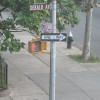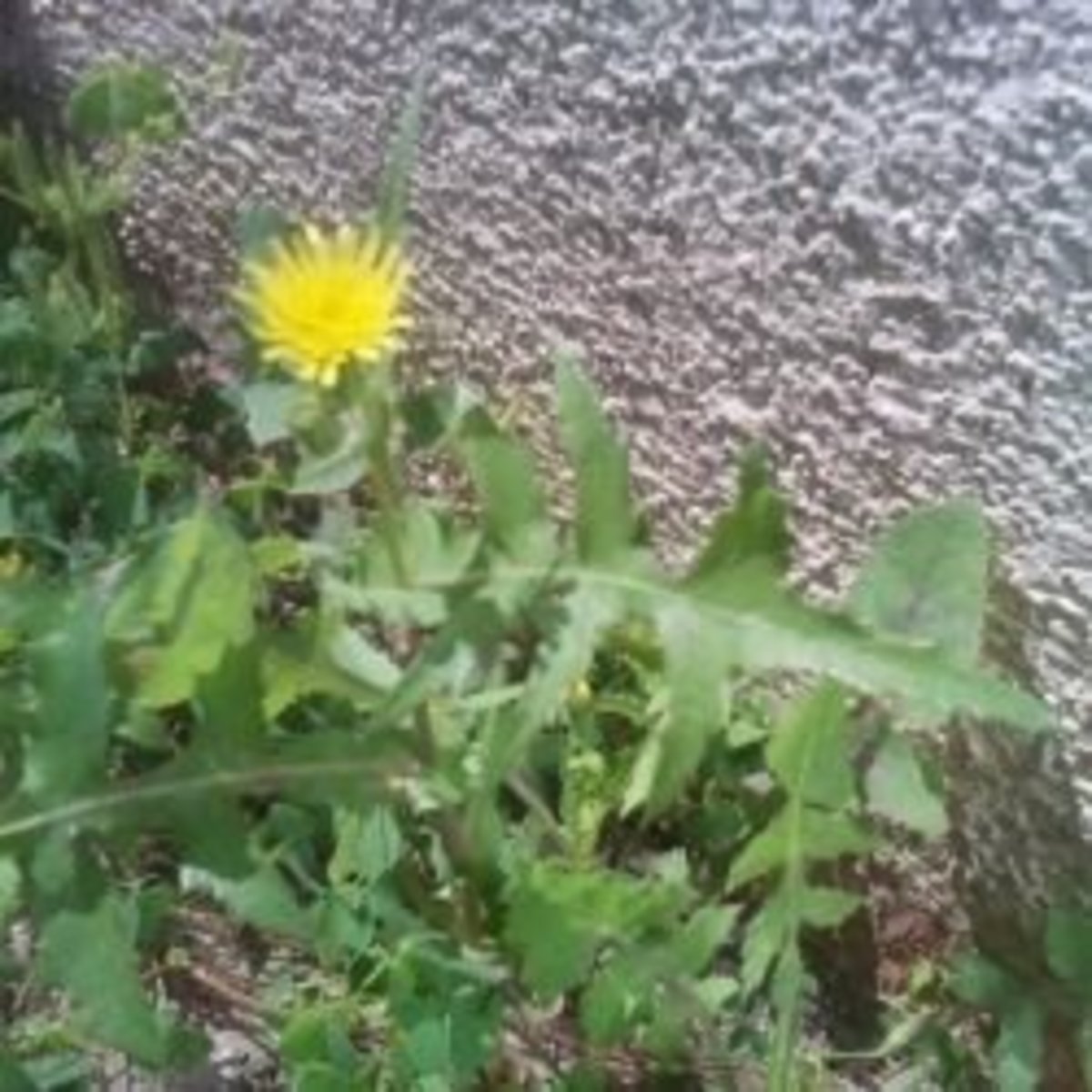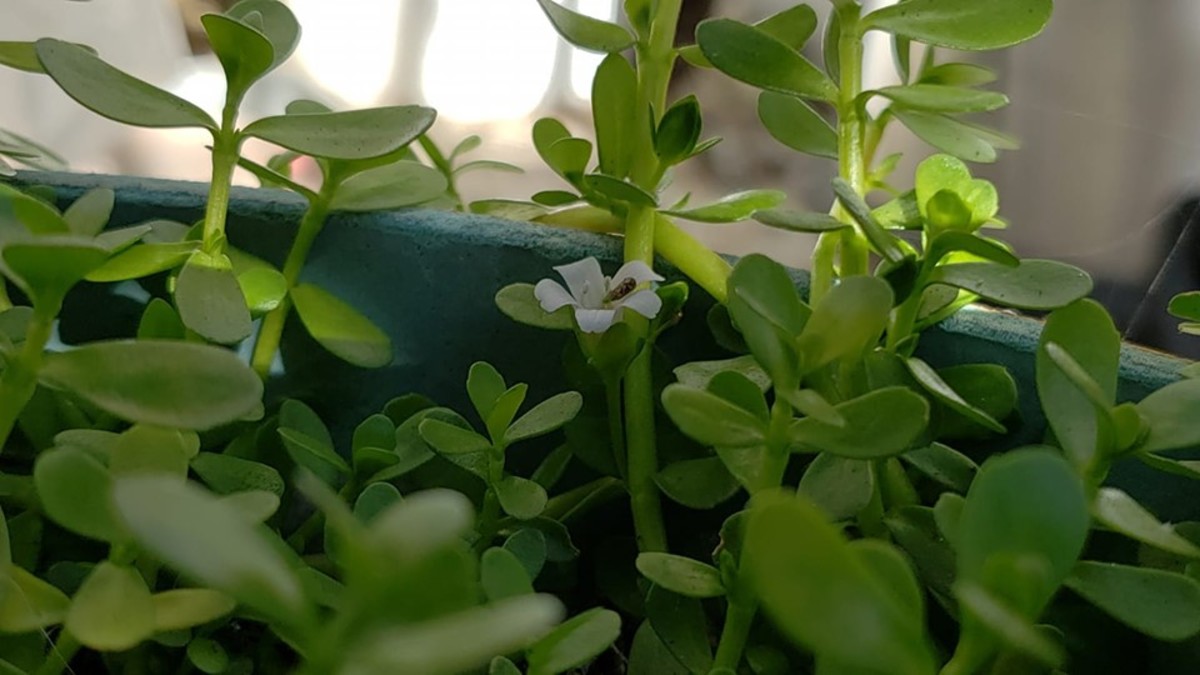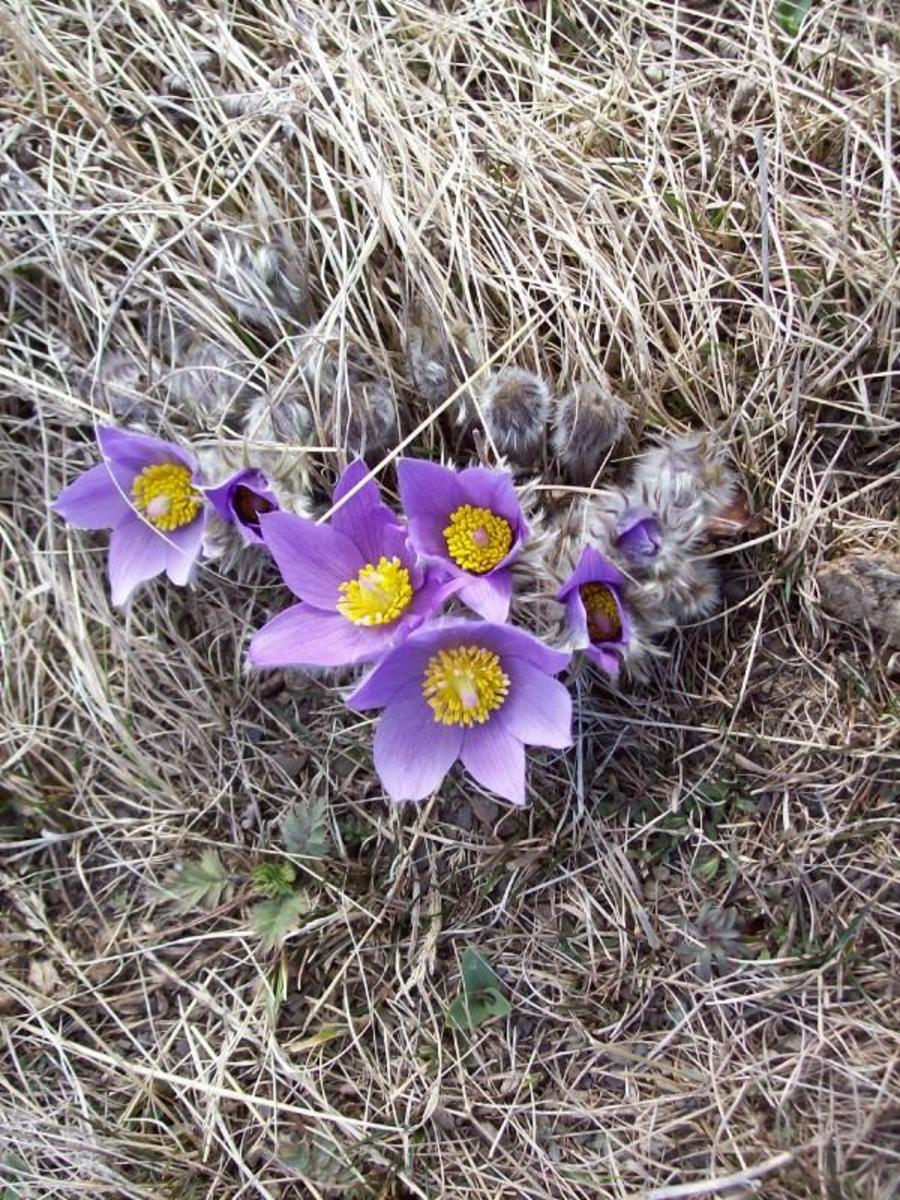Plant Native Herbaceous Plants Instead of Invasive Species: A List of Both
Invasive Periwinkle
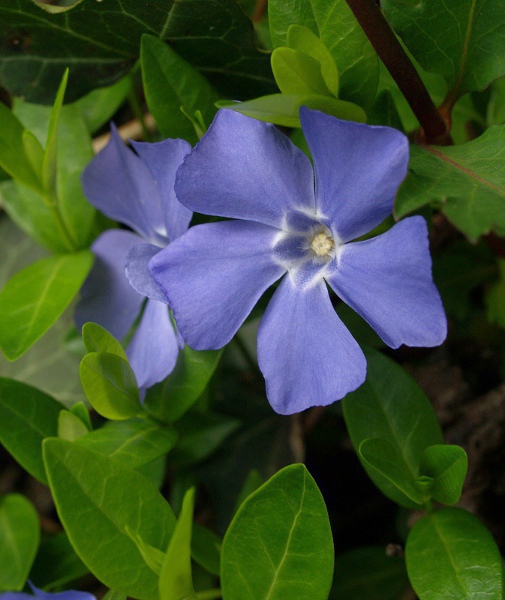
Herbaceous Plants List: Native and Non Native
The Baby's Breath plant, popularly used in many floral arrangements is not native to North America and is an invasive species. In fact, it has invaded New Brunswick to British Columbia, down south to Philadelphia, and to Oklahoma and California, according to the Brooklyn Botanic Garden.
Does it matter whether we use native or non native plants?
Yes, non native plants/invasive species are destructive to our environment. The U.S. government defines an invasive species as one that is not a plant native to the ecosystem in consideration and introducing such a species can or is likely to be harmful to human health and also has an environmental and economic impact.
Native plants, in this case, herbaceous plants, occur naturally in a particular ecosystem. The herbaceous plant - or tree, shrub, vine, grass - originated there without human assistance.
Note: Plants growing in one part of North America may be considered invasive to another part. This is due to different weather patterns, elevations and soil types. Before purchasing herbaceous plants, check to see if it is native to your area.
How did invasive herbaceous shrubs get here?
It was no accident. Invasive plants have been brought here intentionally, according to the Brooklyn Botanic Garden. In fact almost half of the most destructive invasive species now degrading natural habitats in the U.S. were introduced for horticultural purposes. Many invasive plants are still being sold for erosion control or simply for their beauty.
As far as erosion control, U.S. highway departments opted for invasive species to use as quick-growing ground covers, particularly on areas that are slopes.
What is the damage?
Invasive species often grow faster, taller and wider than native species - often creating shade. This, in turn, affects the nutrient cycle of native plants and can have a devastating effect on animals that depend on native plants.
In dollars and cents, damage is about $120 billion dollars per year. Furthermore, about 42 percent of our threatened species on the U.S. List of Endangered and Threatened Species are on the list because of the introduction of non native species - we are destroying their habitats. (See link below for how animals get on the list).
Invasive herbaceous plants are difficult to control and hard to eliminate. Many people are now complaining about the Purple Loosestrife, an herbaceous plant that has invaded most of North America. It is best to avoid using these plants.
Is there any way to easily tell if an herbaceous plant is native or non native/invasive?
Sometimes the name is a clue. For example, the Virginia Mountain Mint is native, but the Chinese Lespedeza is not.
Below is a list of native and non native herbaceous species that you can use as a guide and for reference.
Native Herbaceous Plants
California Fuchsia/Hummingbird Trumpet
Carolina Phlox
Kansas Gayfeather/Prairie Blazing Star
Oregon Box
Philadelphia Fleabane
Virginia Mountain Mint
More Native Herbaceous Plants in Alphabetical Order
Barren Strawberry
Blackfoot Daisy
Blue Flag Iris
Blue Vervain
Common Wood Aster
Checkerbloom
Culver's Root
Deer Vetch
Fireweed
Flowering Spurge
Goatsbeard
Golden Alexanders (attracts butterflies and swallowtails)
Green-and-Gold (although native, this plant is now rare in its native range - from Quebec down south to Florida and Louisiana)
Green Dragon
Hairy Angelica
Jacob's Ladder
Long-Bracted Wild Indigo
Mountain Goldenbanner
Mountain Hollyhock
Ocean Spray
Pickerel Weed
Prairie Cinquefoil
Prairie Flax (has a long, useful history for making fiber and oil, is used to make rope and linen cloth. Seeds are used to create linseed oil used to make paint)
Purple Prairie Clover (blooms attract butterflies and bees/is forage for wildlife)
Queen-of-the-Prairie
Robin's Plantain
Rose Verbena
Roundheaded Bushclover
Showy Fleabane
Spreading Dogbane
Swamp Milkweed
Whorled Milkweed
Wild Quinine
Wild Sarsaparilla
Winter Fat
Winter Green/Partridgeberry
Non Native/Invasive Herbaceous Plants
Chinese Lespedeza
In Alphabetical Order
Baby's Breath
Bachelor's Button
Bird's Foot Trefoil (has invaded most of North America)
Chicory (has invaded most of North America)
Clovers - (all clovers except Purple Prairie Clover) invasive throughout North America
Crown Vetch
Dame's Rocket
Fennel
Foxglove (also known as Digitalis purpurea - depending on the species the plant may be toxic. Native to western and southwestern Europe, northwestern Africa, and western and central Asia. The group of medicines derived from the foxglove plants are known as Digitalin)
Giant Knotweed (has invaded most of North America)
Ice Plant
Lesser Celedine
Moneywort
Ox-Eye Daisy (has invaded most of North America)
Periwinkle (see photo)
Pinellia
Potentilla (has invaded most of North America)
Purple Loosestrife (has invaded most of North America)
Queen-Ann's-Lace (has invaded most of North America)
Scentless Chamomile
Sweet Clover (has invaded most of North America, Puerto Rico and Hawaii)
Water Hyacinth
Yellow Flag Iris (has invaded most of North America)
For More Information about Native and Invasive Species Trees, Vines and Shrubs see the links below:
More Native Plants
- Plant Native Trees Instead of Invasive Species: A Li...
My lovely New York City street is filled with towering trees. But unlike the easily identifiable oak and catalpa of my youth, many of these trees do not belong here in the U.S. They are an invasive species. Choosing to plant only native species has.. - Plant Native Vines Instead of Invasive Species Vines...
One of the most commonly grown vines in the United States is the English Ivy. As the name indicates, it is not native to the U.S. and is an invasive species. In fact, the English Ivy has affected all levels of forested regions, according to the... - Plant Native Shrubs Instead of Invasive Species: A L...
Strolling through my New York City neighborhood I get to enjoy the beautiful Rose of Sharon flowering shrub - one is right outside my window. I also had this pleasure when I strolled through my neighborhood in Seoul, S. Korea during the years I...
